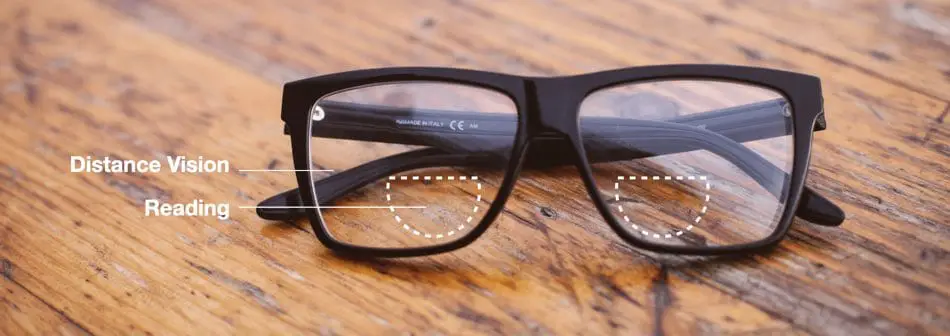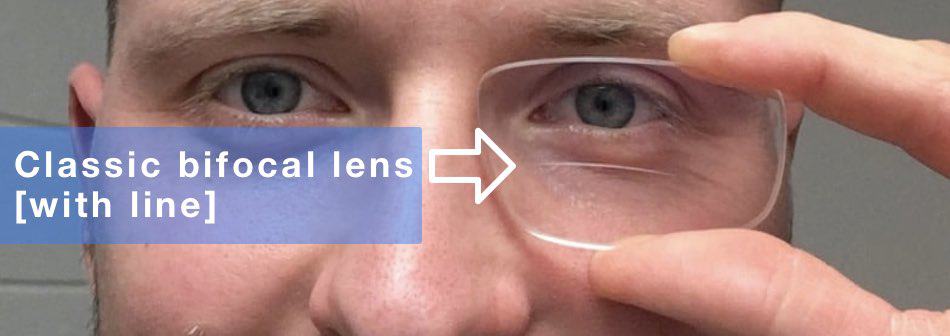Vision problems become more apparent, especially as we age; over time, we begin to struggle to see things the way we used to. People who develop certain vision problems need to determine whether they need bifocals.
There are a few overt signs that indicate the need for bifocals, and they include:
- Frequent headaches felt behind the eyes.
- Changes in vision throughout the day.
- The need to move items further or closer to see them.
Struggling to see is extremely frustrating, but it can be more frustrating not knowing the right way to remedy your vision issues. In this article, we will explore exactly how to know when you need bifocals, and we’ll also go over some helpful tips about bifocals that you could use. If you’re interested in learning more, then keep on reading!
3 Signs That You Need Bifocals
There are several signs that you may need to look into bifocals, and the sooner that you understand these reasons, the quicker you can get your vision under control. In the following section, we will go over three signs that you need bifocals.
Headaches Behind the Eyes
The first sign that you need bifocals is that you have frequent eye strain headaches. These headaches will be felt in your head, but the difference between these headaches and regular ones is that there is some degree of pain felt behind your eyes as well.
You may find that you get headaches while reading a book or trying to focus your eyes on certain objects for a considerable amount of time. Some people also get these headaches when they are doing things up close, like writing.
If you find that you’re developing routine headaches with eye pain, this is a sign that you may need bifocals.
Note: You don’t automatically need bifocals just because you develop frequent headaches with eye pain, as these headaches have several causes. However, many who experience this type of pain could benefit from bifocals.

Daily Vision Changes
Daily vision changes are another strong indication of the need for bifocals. You may start the day with the sharp vision that declines over the course of a day – you’ll know that this applies to you if you can see your tablet without a problem when you first wake up, but you struggle to see the words on it in the afternoon or evening. You could also have moments in the day where your vision is inexplicably blurry.
Some people have multiple pairs of glasses to deal with their vision changes throughout the day. If this sounds like you, chances are you need some bifocals.
You Move Things to See Them Better
If you find yourself moving your phone closer to your eyes, then farther, then closer to focus on the screen, this is a telltale sign you need bifocals. To focus clearly, you may also have to hold certain things far away from you.
If you are experiencing any of the above signs, it’s time to talk to your optician or optometrist about getting fitted for bifocals.
Eye Conditions that Bifocals Help With
Now that you know the three signs indicating that you need bifocals, it’s time to explore the eye conditions that could be at play and how bifocals help.
Presbyopia
Bifocals are typically used to treat presbyopia, which is a condition that develops after a person turns 40. This is an unavoidable condition where the eye’s internal lens loses its elasticity and loses the ability to focus on close objects.
Symptoms of presbyopia include the following:
- Blurry vision when holding a book or newspaper at the typical reading distance.
- Headaches and eye strain when focusing on items or reading material up close.
- Moving things away from yourself to focus on them.
Bifocals are prescribed often for vision problems stemming from presbyopia. They do not reverse the effects of the condition, but they help patients cope with their vision changes.
Eye Problems in Children
You may have thought that bifocals are only for older people, but this is not the case.
Eye Strain
Children develop eye strain just like older folks. This often occurs when they squint their eyes in class to see the chalkboard or the book they want to read. This strain causes eye fatigue and headaches.
Bifocals can be prescribed to help with this issue. They may not be required indefinitely- a child may only need them for a short time until their vision problem corrects itself.
Strabismus
Strabismus is the scientific word for lazy eye, where one eye goes out of alignment. In children, the lazy eye originates from focusing problems, and if patients don’t get prompt treatment, this condition can worsen and lead to the lazy eye turning totally inward. Bifocals help children’s’ eyes to focus on objects without turning inward.
Myopia Control
Bifocal glasses can be an effective method to reduce the progression of myopia in children. In recent years more eye care professionals add bifocals as a valid option for children to slow myopia down. If you want to read more about this topic and alternative lens designs I have an article here for you.
How Bifocals Work
You may think you know how bifocals work, but do you really? This section is for those who could use some information about how bifocal lenses work. You may learn something new.

Bifocals are specialized lenses with two strengths: one strength is for seeing up close, and another is for seeing at far distances. The near-sighted prescription will be situated at the bottom of the lens, while the distance prescription will be at the top.
When someone wears bifocals, they can use the different parts of the bifocal lens to improve their vision. When looking at something that is far away, the wearer can look into the top portion of the lens, and when reading a book or writing, they can look through the bottom part of the lens.
Things to Consider Before Getting Bifocals
Based on the above information, you may have realized that bifocals are worth looking into. But, before you go to your optometrist for a consultation, there are some things that you should know about bifocals:
- The adjustment period: Whether you already have traditional lenses or you’ve never worn glasses before, you will have to go through an adjustment period with your bifocals. It will take some time to get used to looking through the right part of the lens. However, most people adjust to bifocals within a week or so.
- The height of the bifocal line: Not every pair of bifocal lenses will fit your face. The line should line up roughly with your bottom eyelid. Make sure that you speak with your optometrist specifically about the height of the bifocal line. It also helps to wear your bifocals in the office for a few minutes to see if the bifocal line is at the right level.
- Image jumping: There is a harsh line of demarcation between the top and bottom portion of bifocals. This can cause the wearer to experience a jumping image when they move their eyes over that line.
- Alternatives: There are some alternatives to bifocals that every patient should consider. Progressive lenses are like bifocal lenses but much better. They give you a much clearer picture than bifocals do. However, many still opt for bifocals because of their benefits and their modest price tag.
Considering the previous factors will help you decide if bifocals are a good fit for you. I also wrote an article about the different reading segments you can order with your bifocals. You can find it here.
Final Thoughts
Now you know the signs that indicate that you may need to consider bifocals, you know how they work, and you know what to consider during your bifocal consultation. Bifocals could be the solution that you’ve been looking for. We hope that this article will be helpful to you as you explore your vision correction options.
